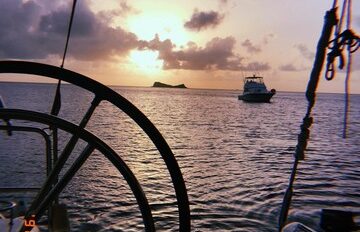The Jellyfish Dance!

When it comes to sea jellies, there is an incredible amount of diversity in size, shape, and toxicity. In fact, there are over 1,500 different species that have a medusa stage at some point in their life cycle! “Medusa” describes the body form of your typical jellyfish – free swimming and complete with tentacles and a bell (or dome). A fun fact about jellyfish is that most marine biologists actually refer to them as “sea jellies” instead. This is because jellyfish are not fish at all, and that just gets confusing if you go around calling something a fish when it isn’t! Jellies are invertebrates (no backbone) which are closely related to other stinging organisms like corals and anemones.
SC students hanging out with jellies while earning their scuba certification.
If you sign up for our marine biology program, you’ll learn that jellies are planktonic, meaning they drift wherever the currents take them, and they are found in oceans world wide. Though it is common to encounter jellies when swimming in the ocean, you will never have to worry about one chasing you. They don’t have eyes or even a brain! They simply drift along using their tentacles to capture the food they bump into.These beautiful yet odd looking creatures come in a wide range of sizes! The smallest jellies have bells with a diameter of 0.5 – 1 mm. Meanwhile the largest ones, such as the Lionsmane and Nomura, can reach 6 – 7 feet (~2 m) in bell width – some Lionsmane Jellies even have tentacles 120 ft (36.5 m) long!

Just study up a little before diving into a new environment. It is true that some species of jellies can inflict painful and occasionally dangerous stings.
Toxic jellies to be familiar with include: Portuguese Man-O-Wars, Sea Nettles, and Box Jellies.
Keep your distance (if possible) until you can determine what kind of jelly you are looking at. If you can’t identify it, the best course of action is move calmly out of its way. Be sure to know which ones are safe too! If you recognize a harmless species while attending an adventure camp, you’ll be more able to safely appreciate its translucent beauty up close!
Oh! And if you join Sail Caribbean this summer you’ll learn the jellyfish dance!

